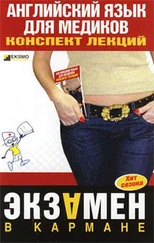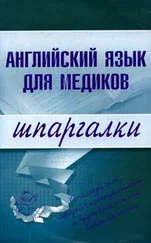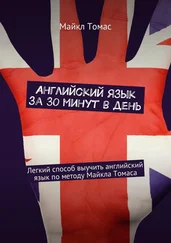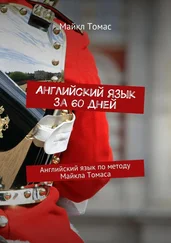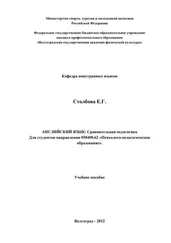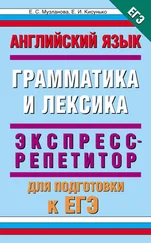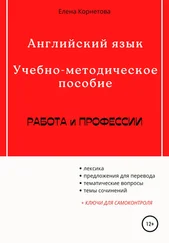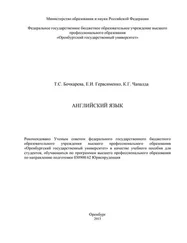Елена Беликова - Английский язык
Здесь есть возможность читать онлайн «Елена Беликова - Английский язык» весь текст электронной книги совершенно бесплатно (целиком полную версию без сокращений). В некоторых случаях можно слушать аудио, скачать через торрент в формате fb2 и присутствует краткое содержание. Жанр: Справочники, на русском языке. Описание произведения, (предисловие) а так же отзывы посетителей доступны на портале библиотеки ЛибКат.
- Название:Английский язык
- Автор:
- Жанр:
- Год:неизвестен
- ISBN:нет данных
- Рейтинг книги:3 / 5. Голосов: 1
-
Избранное:Добавить в избранное
- Отзывы:
-
Ваша оценка:
- 60
- 1
- 2
- 3
- 4
- 5
Английский язык: краткое содержание, описание и аннотация
Предлагаем к чтению аннотацию, описание, краткое содержание или предисловие (зависит от того, что написал сам автор книги «Английский язык»). Если вы не нашли необходимую информацию о книге — напишите в комментариях, мы постараемся отыскать её.
Английский язык — читать онлайн бесплатно полную книгу (весь текст) целиком
Ниже представлен текст книги, разбитый по страницам. Система сохранения места последней прочитанной страницы, позволяет с удобством читать онлайн бесплатно книгу «Английский язык», без необходимости каждый раз заново искать на чём Вы остановились. Поставьте закладку, и сможете в любой момент перейти на страницу, на которой закончили чтение.
Интервал:
Закладка:
Беликова Елена Владимировна
Английский язык
шпаргалка
1. History of medicine
Medicine is among the most ancient of human occupations. It began as an art and gradually developed into a science over the centuries. There are 3 main stages in medicine development: Medicine of Ancient Civilizations, Medicine of Middle Ages and Modern Medicine.
Early man, like the animals, was subject to illness and death. At that time medical actions were mostly a part of ceremonial rituals. The medicine-man practiced magic to help people who were ill or had a wound. New civilizations, which developed from early tribes, began to study the human body, its anatomic composition. Magic still played an important part in treating but new practical methods were also developing. The early Indians, e. g., set fractures and practiced aromatherapy. The Chinese were pioneers of immunization and acupuncture. The contribution of the Greeks in medicine was enormous. An early leader in Greek medicine was Aesculapius. His daughters, Hygeia and Panacea gave rise to dynasties of healers (curative medicine) and hygienists (preventive medicine). The division in curative and preventive medicine is true today. The ethic principles of a physician were summarized by another Greek, Hippocrates. They are known as Hippocrates Oath.
The next stage of Medicine's development was the Middle Ages. A very important achievement of that time was the hospital. The first ones appeared in the 15-th century in Oriental countries and later in Europe. Another advance of the Middle Ages was the foundation of universities during 13 – 14-th centuries. Among other disciplines students could study medicine. During 18-th century new discoveries were made in chemistry, anatomy, biology, others sciences. The advances of that time were invention of the stethoscope (by Rene Laennec), vaccination for smallpox, discovery of anesthetics and development of immunology and scientific surgery.
The next century is rise of bacteriology. Important discoveries were made by Louis Pasteur and Robert Koch. The development of scientific bacteriology made possible advances in surgery: using antiseptics and control of wound infection.
Medicine in the 20-th century made enormous contribution in the basic medical sciences. These are discovery of blood groups and vitamins, invention of insulin and penicillin, practice of plastic surgery and transplantation.
medicine – медицина
human – человеческий
occupation – занятие
to develop – развивать
science – наука
civilization – цивилизация
Middle аges – Средние века
modern – современный
animal – животное
illness – заболевание
death – смерть
discovery – открытие
blood – кровь
2. Cell
The cell is a smallest independent unit in the body containing all the essential properties of life. Manу types of human cells can be grown in test tubes after beeing taken from the body. Cells which are functionally organized are often grouped together and operate in concert as a tissue, such as muscle tissue or nervous tissue. Various tissues may be arranged together to form a unit called organ as the kidney, liver, heart or lungs. Organs often function in groups called organ systems. Thus the esophagus, stomach, раn-сreаs, liver and intestines constitute the digestive system.
Cells are characterized by high degree of complexity and order in both structure and function. The cell contains a number.
Of structures called cell organelles. These are responsible for carrying out the specialized biochemical reactions characterizing each. The many chemical reactions taking place in a cell require the establishment of varied chemical microenvironment.
Carefully controlled transport mechanisms along with highly effective barriers – the cell membranes – ensure that chemicals are present in the proper region of the cell in appropriate concentration.
The cell membranes of a mixture of protein and lipid form its surroundings.
Membranes are an essential component of almost all cells organelles. The membrane allows only certain molecules to pass through it.
The most visible and essential organelle in a cell is the nucleus, containing genetic material and regulating the activities of the entire cell.
The area outside of the molecules is called the cytoplasm. Cytoplasm contains a variety of organelles that have different functions.
cell – клетка
independent – независимый
unit – единица
body – тело
all – все
lipid – жир
microenvironment – микровооружение
muscle – мышечный
nervous – нервный
digestive – пищеварительный
life – жизнь
human – человеческий
together – вместе
tissue – ткань
organ systems – системы органов
to function – функционировать
to contain – содержать
membranes – мембраны
protein – протеин
nucleus – ядро
cytoplasm – цитоплазм
different – различный
3. Tissue
A tissue is a group of cells working together to do a special job A histologist is one who specializes in the study of tissues. The cells, of which the tissues are made, contain from 60 to 99 % water. Chemical reactions that are necessary for proper body function are carried on much more readily in a water solution. The water solution and other materials in which the tissues are bathed is slightly salty. It must be mentioned that an insufficiency of tissues fluid is called dehydration and an abnormal accumulation of this fluid caused a condition called edema.
Tissue classification: The 4 main groups of tissues are:
1) epithelial tissue forms elands, covers surfaces and lines cavities;
2) connective tissue holds all parts of the body in Place. This can be fat, cartilage, bone or blood. Blood sometimes is considered a sort of tissue, since it contains cells and performs many of the functions of tissues. However; the blood has many other unique characteristics;
3) nerve tissue conducts nerve impulses all over the body;
4) the muscle tissue is designed for power-producing contractions.
The surface of the body and of the tubes or passages leading to the exterior and the surface of the various cavities in the body are lined by cells which are closely approximated to each other; thus have a small amount of intercellular substance. This lining cellular layer is called epithelium. The nature and consistency of intercellular substance, the matrix, and the amount and arrangement of fibers furnish the basis for the subdivision of connective tissue into three main groups: connective tissue proper, cartilage and bone In connective tissue the intercellular substance is soft; in cartilage it is firm, yet flexible and elastic; in bone it is rigid due to the deposition of calcium salt in the matrix. In multicellular organisms certain cells developed to a high degree the properties of irritability and conductivity. These cells form the nervous tissues.
The nervous system of higher animals is characterized by the multiplicity of cellular forms and intercellular connections and by the complexity of its functioning.
Muscle tissue is composed of elongated cells which have the power of contracting or reducing their length. This property of contraction is ultimately a molecular phenomenon and is due to the presence of protein molecules. The following three types of muscle tissue occur in the body.
Читать дальшеИнтервал:
Закладка:
Похожие книги на «Английский язык»
Представляем Вашему вниманию похожие книги на «Английский язык» списком для выбора. Мы отобрали схожую по названию и смыслу литературу в надежде предоставить читателям больше вариантов отыскать новые, интересные, ещё непрочитанные произведения.
Обсуждение, отзывы о книге «Английский язык» и просто собственные мнения читателей. Оставьте ваши комментарии, напишите, что Вы думаете о произведении, его смысле или главных героях. Укажите что конкретно понравилось, а что нет, и почему Вы так считаете.

